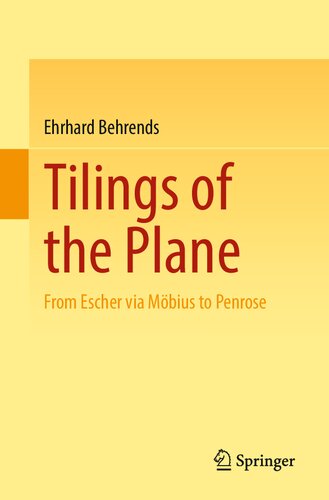

Most ebook files are in PDF format, so you can easily read them using various software such as Foxit Reader or directly on the Google Chrome browser.
Some ebook files are released by publishers in other formats such as .awz, .mobi, .epub, .fb2, etc. You may need to install specific software to read these formats on mobile/PC, such as Calibre.
Please read the tutorial at this link: https://ebookbell.com/faq
We offer FREE conversion to the popular formats you request; however, this may take some time. Therefore, right after payment, please email us, and we will try to provide the service as quickly as possible.
For some exceptional file formats or broken links (if any), please refrain from opening any disputes. Instead, email us first, and we will try to assist within a maximum of 6 hours.
EbookBell Team

4.4
62 reviewsThe aim of the book is to study symmetries and tesselation, which have long interested artists and mathematicians. Famous examples are the works created by the Arabs in the Alhambra and the paintings of the Dutch painter Maurits Escher. Mathematicians did not take up the subject intensively until the 19th century. In the process, the visualisation of mathematical relationships leads to very appealing images. Three approaches are described in this book.
In Part I, it is shown that there are 17 principally different possibilities of tesselation of the plane, the so-called "plane crystal groups". Complementary to this, ideas of Harald Heesch are described, who showed how these theoretical results can be put into practice: He gave a catalogue of 28 procedures that one can use creatively oneself - following in the footsteps of Escher, so to speak - to create artistically sophisticated tesselation.
In the corresponding investigations for the complex plane in Part II, movements are replaced by bijective holomorphic mappings. This leads into the theory of groups of Möbius transformations: Kleinian groups, Schottky groups, etc. There are also interesting connections to hyperbolic geometry.
Finally, in Part III, a third aspect of the subject is treated, the Penrose tesselation. This concerns results from the seventies, when easily describable and provably non-periodic parquetisations of the plane were given for the first time.